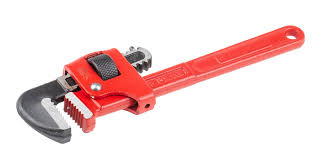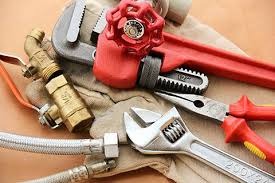Introduction to Pipe Wrenches
Having the appropriate equipment for home improvements or undertaking a new project is essential. Several of these tools are very useful, and one such is the pipe wrenches, which are of great use to anybody who wants to perform plumbing or mechanical work. In fact, from the most straightforward job like handling leaking pipes or tightening fittings or fixing the screws into pipe fittings, there is no job a pipe wrench cannot do effectively.
These tools’ grasp and twist are adequate on round or cylindrical objects like pipes and nuts. Many different types of these hand tools are available, and knowing how they work is necessary to accomplish a specific task. Forget about hammers and saws; let’s rather discuss what you do with a pipe wrench – it will be your new best friend when doing DIY!
Types of Pipe Wrenches and Their Uses

Every plumbing tool type, a pipe wrench, includes a unique configuration with specific intended uses. First in order: there is the straight pipe wrench. Its serrated jaws help clamp round objects firmly, enabling the wrench to be used on pipes. About the same, the adjustable pipe wrench is another frequent choice. This tool requires a movable jaw to work on various fittings and pipes with no hassle. All sorts of plumbing, including household plumbing enthusiasts, can use it.
To reach into tight places, try a basin wrench. It is provided with a lengthy handle with pivoting jaws capable of going to narrow places under a sink that are mostly inaccessible to other types of wrenches. Then there is the strap wrench that utilizes a rubber strap, which doesn’t possess any teeth to help grip surfaces but not damage them, and this is also the reason it is also called a wrench for delicate surfaces. This type is perfect, especially with excellent finished surfaces, so ordinary wrenches do not remove the finish or scratch. Every tool has its special relevance in any toolbox!
How to Choose the Right Pipe Wrench for Your Project
The selection of piping tools is essential for completing work in the projects. Start with the nominal pipe size for the pipes to be worked on. This is because various cross-sectional and shapes of the pipes have different wrenches for fixing. Now, think about the nature of the job you anticipate having shortly.
For instance, a larger adjustable wrench will be ideal for heavy tasks where more torque and gripping ability are required. For those doing small plumbing jobs, a lighter model may be appropriate. The selection of the tools also depends on the material. Steel wrenches provide excellent reasons for their use, but their main drawback is the weight. In contrast, aluminium models can be quite light but still offer a decent amount of strength.
Last but not least, don’t ignore comfort! Make sure the handle has a good grip and fits well in your hand when working for long durations. Degrees of grasping, comfortability, and shape assist in the operation of tools, especially during a project’s high stress levels.
Proper Usage and Safety Tips for Pipe Wrenches
A pipe wrench is a tool that requires a fair amount of caution and experience to be used successfully. While working, hold the handle properly to gain control of the tool. Use this tool to turn the fitting; ensure the correct position is selected on the pipe before turning the wrench. Pay attention to your body language. Bend at the knees and avoid leaning forward; push your weight downward on the angle that has been provided so as not to stress your back.
When only fighting with stubborn pipes, it may be worthwhile to try a penetrating oil to help dissolve any connections before too much force is used. Safety goggles are worn to protect your eyes against flying debris and dust particles that are common during work with a pipe wrench.
Gloves can also increase contact with handles and protect against sharp tools. Before each use, ensure the pipe wrench is free from moisture, rust, damage or worn parts. Such maintenance makes it nice to use the pipe wrench the next time some work is called for réparateurs techniques, Tool & Date that would be found in all DIY enthusiasts.
Common DIY Projects That Require a Pipe Wrench
Different tools and equipment are required for tasks in and around the house, including the pipe wrench. A common application would be in plumbing. When you have a pipe wrench, performing different plumbing tasks, such as fixing a loose sink or adding a sink, is more accessible. Yet another simple but fun project is working with outdoor fixtures. When working with things like garden hoses or in systems like sprinklers, these helpful gadgets come into play to ensure the connections are tight and leaks are nonexistent.
You may also use a pipe wrench to dismount your old faucet taps. This grip and leverage provide the driving force to remove stuck but threaded fittings without causing any damage to the fittings. This tool will be helpful for other piping necessities, such as routine HVAC maintenance that needs ductwork. This is to fit metal parts properly,e enabling effective operation. It is such an all-around use that it explains why hobby builders love pipe wrenches when working in divergent areas in their homes.
Maintenance and Care for Your Pipe Wrench
Caring for your pipe wrench will help you succeed in DIY work. Above all, it is troublesome not only to use but also to maintain – the cleaner, as it is the most critical routine. Do not forget to remove the dirt and grease with a clean cloth after every session to avoid accumulation. Gradually examine these jaws for impairment or wear. Teeth that are not sharp compromise the risk of stripping the pipe and the socket, which is annoying and inefficient.
In the case of excessive wear, look to restore the sharp edges or change the wrench entirely. It is unnecessary to state that lubrication is required to allow the tool to function correctly. A thin film of machine oil should be applied to every pivot point, and that too at the time frame of a few months.
This helps in the constant motion of all components, thereby preventing moisture from rusting the metal over the ages. Always place your pipe wrench at a location that does not have any water. A storage box or a hookboard effectively shields against factors that may lead to damage. These seemingly small aspects will help preserve the unit for much longer and make it ready when you most expect it to be.
Alternatives to Pipe Wrenches
A pipe caulking with regular pipe wrenches, and thus, several options come in handy for properly loosening or tightening pipes. An adjustable wrench is one such option. With this tool, you can make the work more accessible because it can handle different-sized nuts and bolts. Many people would find it hard to use a funnel in such a case, but a basin wrench comes to mind for those who do.
It has an elongated handle and a pivoting jaw allow one to reach recessed plumbing locations inaccessible to standard tools. Rubber-gripped pliers will serve the best when working on such fittings. The pliers give ample control but prevent injury or scraping on the surfaces of interest. Strap wrenches can also be used to grip smooth surfaces without damaging them. These wrenches have excellent capability, especially in areas with little clearance or where the finish is polished and shiny.
Conclusion
Pipe wrenches are great additions to the home improvement arsenal for pipe fittings. Their complex structure construction and multi-purpose characteristics make them ideal for most plumbing tasks. It is possible not only to know how to use different types of pipe wrenches but also to know which one is appropriate and how to do it carefully for improvement. Regular maintenance will allow the pipe wrench to serve in good working conditions for many years.
While it is envisaged that other tools may be utilized in place of a pipe wrench, it is likely that, for the type of jobs where pipes or fittings require a great amount of torque, a pipe wrench is virtually the best option. As long as you are tackling plumbing problems, no matter how complicated they appear to be—whether you are changing the unduly water-bearing pipes in your house or assembling new sections, the presence of several pipe wrenches is going to make it possible for you to carry out almost every plumbing related task fearlessly. Equip yourself with strategic information and these tools – it will be worthwhile in your DIY projects shortly.
FAQs:
What functions do pipe wrenches serve?
Plumber Wrenches or Pipe Wrenches are used for holding and turning Pipes and fittings and are helpful in plumbing work.
Will pipe wrenches damage delicate surfaces when used?
Yes, strap pipe wrenches are used to protect the strap from grip surfaces that can easily get affected or scratched.
What makes pipe wrenches beneficial?
To turn bolts and fittings, pipe wrenches come with sturdy jaws that can grip round objects tightly allowing for the smooth torquing of the fittings.






